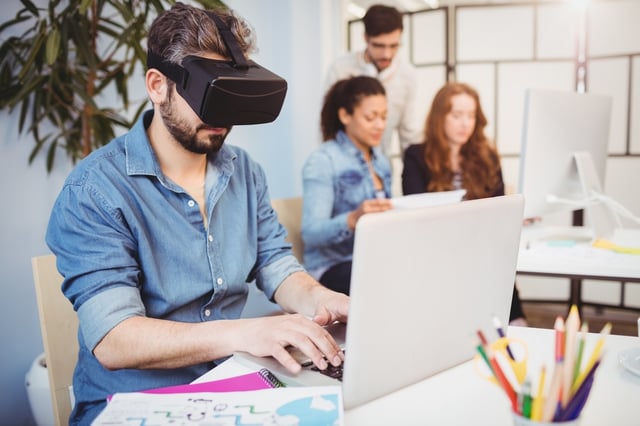Virtual reality has been very popular recently as vendors release systems designed to take users inside an artificial, but very realistic, world.

While most virtual reality systems released thus far have been based on mobile devices, high-definition systems that use data served by an enterprise-class workstation are on the near horizon. What you might not realize is that business applications are likely to represent most VR hardware sold for the next four or five years.
Why VR for business?
Virtual reality won't come into the enterprise because employees want better game graphics. Instead, business-data visualization and shared technical data analysis will, for most enterprise users, be the applications that justify bringing virtual reality into a business setting.
Big data analysis has led many data scientists to realize that there must be some new way to see the data driven by the analysis. Simple rows and columns on a spreadsheet won't be able to handle the requirements when companies start analyzing data sets that can be measured in multiple petabytes.
Virtual reality headsets allow an analyst to move into the data, see visualizations from three dimensions, and have a better understanding of the complex relationships that can exist between different types and sources of data.
While those in the back office are analyzing data, field representatives have to deal with intensely complex systems that must be deployed and repaired in the field. Virtual reality is a mechanism that can let multiple technicians work on a system simultaneously, sharing information on the systems in the field and sharing knowledge that has come from working with the systems to keep them operating and safe.
The ideal workstation for VR
The two biggest considerations for a workstation that will be used for virtual reality are the CPU and the graphics co-processor.
Graphics
The graphics co-processor is easy to understand. When the organization wants to share a virtual-reality experience, there's no getting away from the workstation's requirement that the graphics be fast and very capable.
CPU
Even with the speed of the best co-processor, there are chances for things to go wrong with the display. The graphics co-processor has to be given data to display. That's the job of the CPU, and it has to be within a generation of modern if it's going to have any chance of presenting enough data to the graphics processor to keep the display flowing smoothly.
The CPU and GPU must work together because jerkiness and slowness in virtual reality are some of the surest paths to user sickness. When companies running beta tests for virtual reality ran user tests, they found that the jerky disconnect between user reality and terminals on the floor of the data center was enough to make users nauseous.
Ensure that your servers can turn out data efficiently and that your workstation hardware (especially CPU and GPU) are up to the demands of VR, and you'll give your business units a competitive advantage that won't go back to "small" any time in the next five years.



.png?width=1080&name=GOOGLE%20REVIEW%20(1).png)